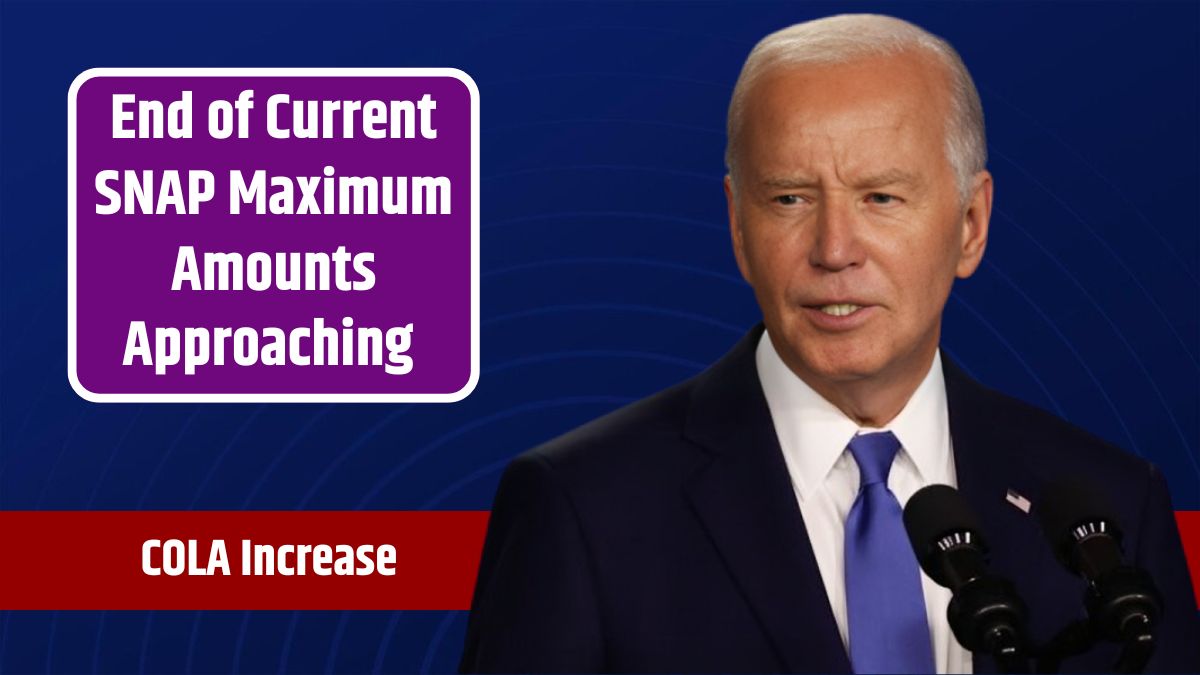The Supplemental Nutrition Assistance Program (SNAP), often referred to as food stamps, provides essential support to millions of low-income Americans. With the rising costs of living, the United States Department of Agriculture (USDA) implements a cost-of-living adjustment (COLA) each year, including for 2025. This ensures that the benefits reflect inflation, helping families manage food expenses.
However, while most SNAP recipients in the 48 contiguous states and U.S. territories will see a small increase in their benefits starting October 1, 2024, not everyone will experience an increase. Hawaii, in particular, will see a reduction in SNAP benefits.
COLA
Starting on October 1, 2024, most SNAP recipients across the country will notice a slight increase in their monthly payments. This adjustment comes in response to rising food prices and inflation in general, aiming to give recipients more purchasing power to cover their basic needs.
For example, the 48 contiguous states, the District of Columbia, Guam, the U.S. Virgin Islands, and Alaska will benefit from this COLA increase. However, due to Hawaii’s unique cost of living, it will not see an increase, and in fact, recipients there will experience a slight reduction in their payments.
Although this increase provides some relief, it is relatively modest. Many SNAP recipients may not notice a significant difference in their benefits compared to September’s payment.
Amounts
While the precise boost in benefits will depend on a recipient’s household size and state of residence, the increase is small. Given that the adjustment is intended to reflect inflation, it still offers a slight financial buffer for struggling families. If you are eligible for a SNAP payment on October 1, you can check your EBT card on that day to see the exact amount of your adjusted benefit.
SNAP Reduction
Hawaii is unique in this year’s COLA adjustment. Due to the island state’s different cost-of-living index, Hawaii SNAP recipients will see their benefits decrease, making it the only state experiencing a reduction. This is likely due to changes in the USDA’s calculation method for determining need and local cost factors. As a result, Hawaiian beneficiaries will need to plan accordingly.
Payment Schedules
Each state distributes SNAP benefits on different days, meaning that the exact date you receive your COLA-adjusted payment will vary depending on where you live. Below is a breakdown of the payment schedule for each state and U.S. territory for October 2024:
| State/U.S. Territory | SNAP Payment Dates for October |
|---|---|
| Alabama | October 4-23 |
| Alaska | October 1 |
| Arizona | October 1-13 |
| Arkansas | October 4-13 |
| California | October 1-10 |
| Colorado | October 1-10 |
| Connecticut | October 1-3 |
| Delaware | October 2-23 |
| Florida | October 1-28 |
| Georgia | October 5-23 |
| Hawaii | October 3-5 |
| Idaho | October 1-10 |
| Illinois | October 1-10 |
| Indiana | October 5-23 |
| Iowa | October 1-10 |
| Kansas | October 1-10 |
| Kentucky | October 1-19 |
| Louisiana | October 1-23 |
| Maine | October 10-14 |
| Maryland | October 4-23 |
| Massachusetts | October 1-14 |
| Michigan | October 3-21 |
| Minnesota | October 4-13 |
| Mississippi | October 4-21 |
| Missouri | October 1-22 |
| Montana | October 2-6 |
| Nebraska | October 1-5 |
| Nevada | October 1-10 |
| New Hampshire | October 5 |
| New Jersey | October 1-5 |
| New Mexico | October 1-20 |
| New York | October 1-9 |
| North Carolina | October 3-21 |
| North Dakota | October 1 |
| Ohio | October 2-20 |
| Oklahoma | October 1-10 |
| Oregon | October 1-9 |
| Pennsylvania | Over the first 10 business days |
| Rhode Island | October 1 |
| South Carolina | October 1-10 |
| South Dakota | October 10 |
| Tennessee | October 1-20 |
| Texas | October 1-28 |
| Utah | October 5, 11, and 15 |
| Vermont | October 1 |
| Virginia | October 1-7 |
| Washington | October 1-20 |
| West Virginia | October 1-9 |
| Wisconsin | October 1-15 |
| Wyoming | October 1-4 |
| Guam | October 1-10 |
| Puerto Rico | October 4-22 |
| U.S. Virgin Islands | October 1 |
| Washington D.C. | October 1-10 |
While the 2025 COLA for SNAP benefits offers a slight increase for most recipients, the adjustment remains modest. The real difference in monthly payments may be hard to notice for many. However, it’s still a crucial step in helping families cope with inflation. Hawaii stands out as the only state where SNAP benefits will decrease, reminding us that regional cost-of-living factors play a major role in determining benefits.
Beneficiaries should be aware of the payment schedule for their state or U.S. territory to ensure they receive their benefits on time and adjust their grocery shopping accordingly. If you live in one of the affected states or territories, check your EBT card on the designated date to see your updated benefits.
FAQs
Will all SNAP recipients get a COLA increase?
No, Hawaii will see a reduction instead of an increase.
When does the 2025 SNAP COLA take effect?
The 2025 COLA starts on October 1, 2024.
How much will SNAP benefits increase after the 2025 COLA?
The increase will be small, but it varies by state and household size.
Why are Hawaii’s SNAP benefits decreasing?
Due to Hawaii’s cost-of-living index, the USDA has adjusted benefits downwards.
Do all states distribute SNAP benefits on the same date?
No, each state has its own schedule, with some distributing over several weeks.






